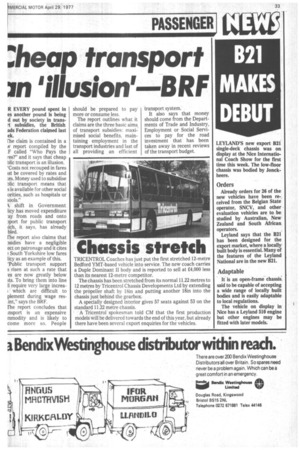,:heap transport m 'illusion' BRF
Page 35

If you've noticed an error in this article please click here to report it so we can fix it.
R EVERY pound spent in es another pound is being d out by society in trans subsidies, the British ads Federation claimed last ek.
Ehe claim is contained in a Ar report compiled by the F called "Who Pays the res?" and it says that cheap DliC transport is an illusion. 'Costs not recouped in fares Lst be covered by rates and :es. Money used to subsidise DliC transport means that s is available for other social orities, such as hospitals or Lools.'
k. shift in Government Icy has moved expenditure ay from roads and onto von for public transport Lich, it says, has already bled.
Elie report also claims that )sidies have a negligible ect on patronage and it cites South Yorkshire low fares licy as an example of this. 'Public transport support s risen at such a rate that es are now greatly below As. To bring them into line 11 require very large increa; which are difficult to plement during wage resint," says the BRF.
rhe report concludes that [nsport is an expensive rnmodity and is likely to come more so. People should be prepared to pay more or consume less.
The report outlines what it claims are the three basic aims, of transport subsidies: maximised social benefits, maintaining employment in the transport industries and last of all providing an efficient transport system.
It also says that money should come from the Departments of Trade and Industry, Employment or Social Services to pay for the road investment that has been taken away in recent reviews of the transport budget.




















































































































































































